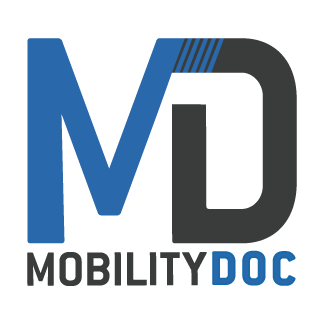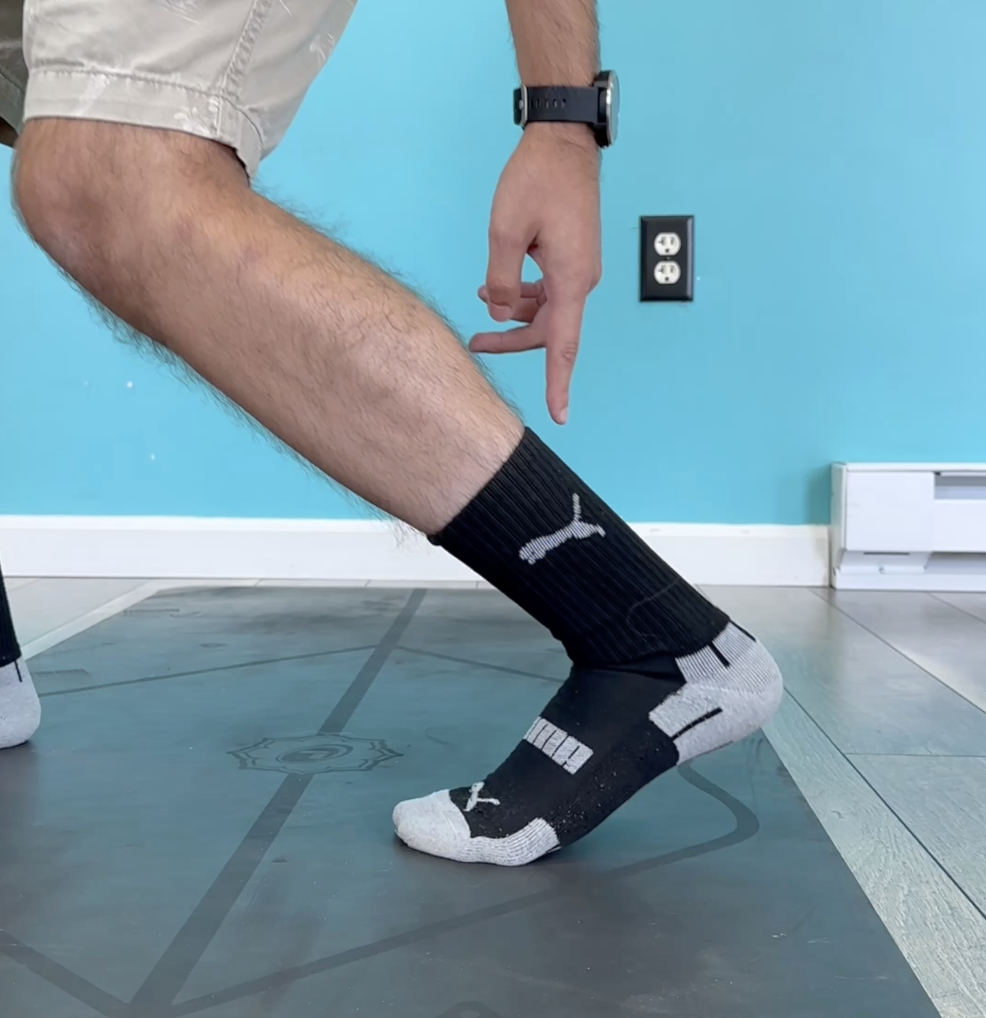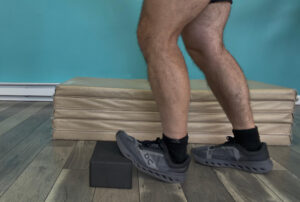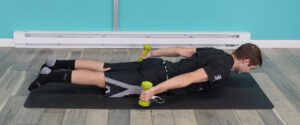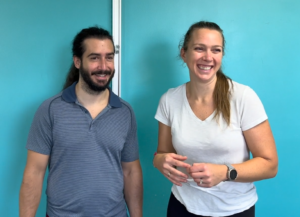Everyone is buzzing around with the question of what is going to happen with Aaron Rogers. If you haven’t heard, the NY Jets quarterback ruptured his achilles during his debut game. Approximately 4 minutes in… I think I can speak for all Jets fans when I say… heartbroken. Probably no one more than Rogers himself. Which of course begs the question… Is Aaron Roger’s achilles rupture a career ending injury? I wish we could give you a definitive yes or no, but honestly it’s complicated. There are so many variables. Today we are going to break down why Aaron’s injury happened, why this part of the achilles is common to injure, and treatment options.
How It Happened
There are a few reasons why Aaron Rodgers suffered his achilles rupture, however there are 2 things in particular that shine above the rest. The first is the fact that he had a calf strain in the same leg just 2 months earlier. You may be thinking… well that was 2 months ago! The reality is he didn’t take much time off when it happened. Which is OK! As long as it was able to get it back to 100% in that time. When you suffer a muscle strain of any kind, the muscle and the tendon both weaken. This is because the muscle strain results in that muscle pulling on the surrounding tendons. Because that tendon is now being put in a more vulnerable position with extra stress and strain, it’s more susceptible to injury.
The 2nd thing is when Aaron was taken down by the defensive lineman his calf was having to deal with 2 opposing stressors. The leg of the ruptured tendon was planted, heel down. Because the leg was planted, the angle he was tackled at caused his calf and tendon to be in a stretched position. That means the muscle and tendon were in an elongated state. Think of it like a regular calf stretch. While trying to fight the takedown, Rodgers was pushing into his toes on the same stretched leg. This caused a contraction in the muscle as it was being stretched (If you try it yourself… it doesn’t feel good). That elongated state is harder to produce workload and ultimately resulted in the tendon being pushed past the point of no return. That is when the rupture happened. Obviously with the help of a 250lb man.
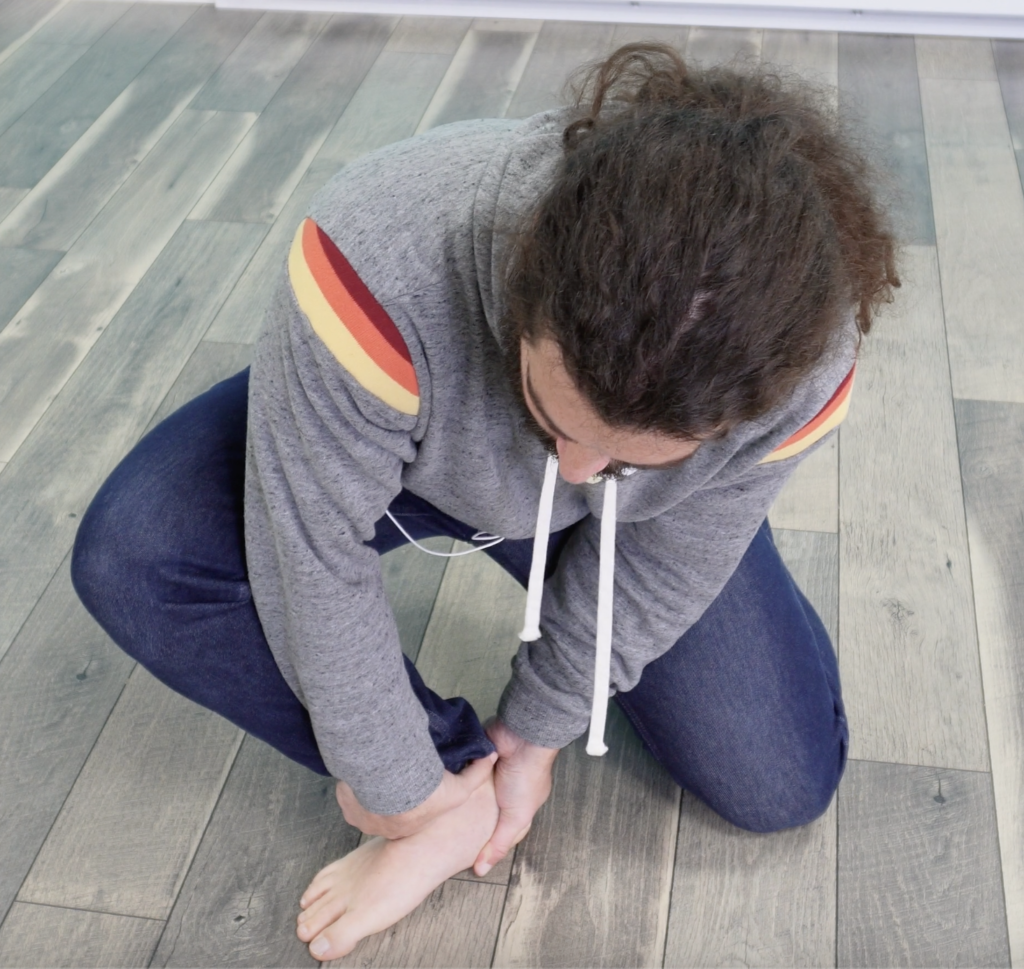
Confused? It took me a second to process it too. I’m a pretty visual learner so click here for a video of Dr. Jon (a Jets superfan) describing exactly what we’re talking about.
Why This Area Is Common
The achilles tendon is a fibrous piece of connective tissue that connects your calf to your heel. There are 2 muscles in the calf that attribute to the fibers of the tendon. Those 2 muscles are the gastrocnemius and the soleus. Behind the tendon and deep in the anatomy of the area there are arteries and veins that flow through bringing blood and oxygen to the calf and tendon. About 2-4 cm above the heel bone, there is an area of the tendon called the “watershed”. This is where 75% of all achilles ruptures take place. Why is this area so much more delicate than the rest? A more limited supply of blood. Because of the nature of the tissue, there is less vascularity (blood flow). This lesser amount of blood makes it less elastic and much more likely to become injured.
Comparing Treatment options
In general, achilles rupture treatment greatly depends on the person, age, injury, and the amount of physical activity they do on a regular basis. Most younger people and athletes tend to lean towards surgery. Surgery often results in a faster recovery with a lesser chance that the achilles tendon will re-rupture. How it is surgically repaired is by sewing the two portions together, potentially even reinforcing it with other tendons (Mayo Clinic). Non-surgical treatment involves rest, ice, and keeping the ankle from moving as it repairs for the first few weeks. This sometimes takes longer but also has a good success rate! No matter which way you go, recovery times range on average from 6-11 months.

Is It Possible To Get Back On The Field?
The answer is YES! Aaron Rodgers isn’t the first and will not be the last to suffer an achilles rupture. In a study by AOFAS on professional athletes, it showed that about 75% of professionals get back on the field. From what we know about Aaron Rodgers, we hope he chooses a surgical approach. If he wants to get back on the field we think it will be his best chance for success. No matter what he chooses, we hope that he makes the right decision for him. Everyone is different and will have a different rehabilitation journey. We will support him in whatever he chooses!
Preventative Measures
So how do you keep yourself from this kind of serious injury? Sometimes you can’t. It can happen from sudden impact to the area. If you’re playing a rough and tumble sport like football, there is always a chance it can happen, HOWEVER! Here are a few things you can do to lower your chances of injury.
- Stretch – make sure your calf and lower leg is healthy! You can do this by foam rolling, stretching, and other rehabilitative techniques. Tight muscles pull on surrounding ligaments and tendons! Make sure you keep them healthy
- Strengthen – Keeping your calf strong will also help protect your achilles. Strong muscles and proper body mechanics make sure your tendons aren’t getting overworked.
- Mix Up Your Exercise – Try doing a combination of high and low impact exercises. That means not just running and jumping. Make sure you also walk, bike, or even swim.
- Ramp Up Slowly – When most of us start something we are all or nothing kind of people! It’s important to keep ourselves in check and when starting a new sport or ramping up our training not to do too much too fast!
Try These Ankle Mobility Exercises For Every Day
Stay tuned into our socials for more information on whats going on with Aaron Rodgers injury and explanations about what happened!
Stop Dealing With Twinges and Twangs
It happens to everyone… you’re going about your normal routine when you feel a sharp twinge or twang. Wouldn’t you like that to happen less? Maybe even get rid of them all together? If you’re constantly having to sit on the sidelines because these little issues keep popping up you need to join MDFit. It’s the perfect combination of education, fitness, and science to get your body bulletproofed. With a free week trial you have nothing to lose. Give MDFit a try and see what it can do for you!
